In Groupme App, Do.others Know.when You Read Nessages
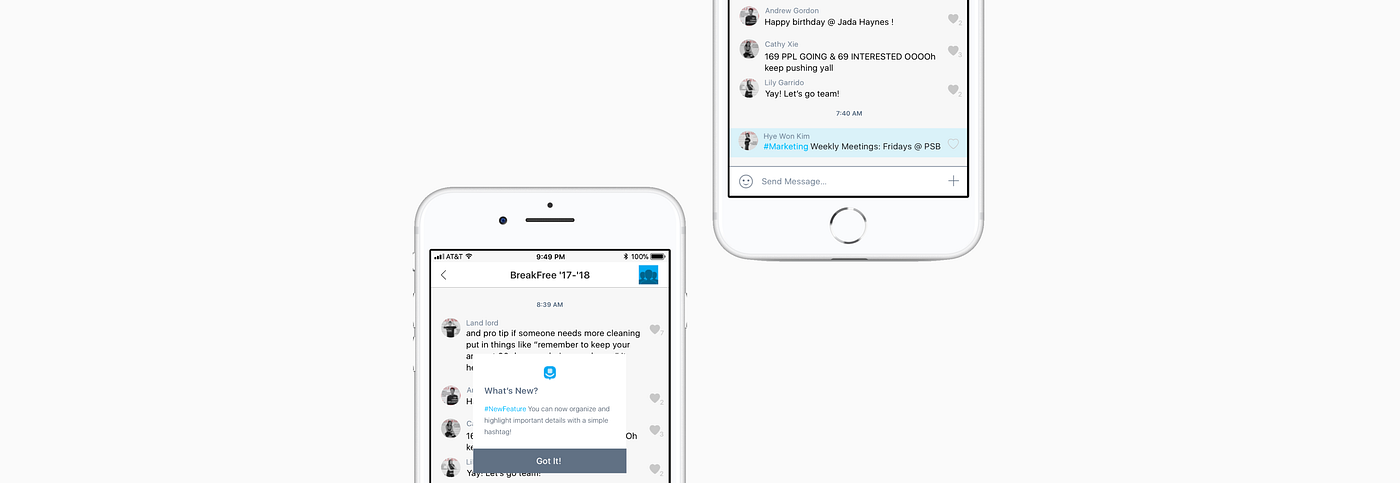
GroupMe Concept: Designing for More than Meaningful Conversations
![]()
As a college student, I'm a part of many groups on campus, like my trip the light fantastic toe team, projection grouping, or my freshman year crew. I utilize GroupMe to communicate with my friends online and share data, just when it comes to sharing of import details, I apply other products like Facebook, Messenger, emails, etc.
GroupMe allows users communicate all kinds of information with everyone in the grouping. Merely users have difficulties sharing and finding of import or specific messages because:
- It'south difficult to detect in a huge pile of messages.
- Users can't practise things like pin or salvage letters they desire.
Some Messages are More Of import than Others
Going into this, my original assumption was: if GroupMe fabricated features like pinning, users could share and detect important information easily.
Simply, what's the actual trouble?
Cu r rently, GroupMe offers a 'Popular' folio, where yous can run across:
- The almost popular messages (messages with the nearly likes).
- Your messages that other people liked.
- Messages that you liked — which is kind of like to 'saving' messages
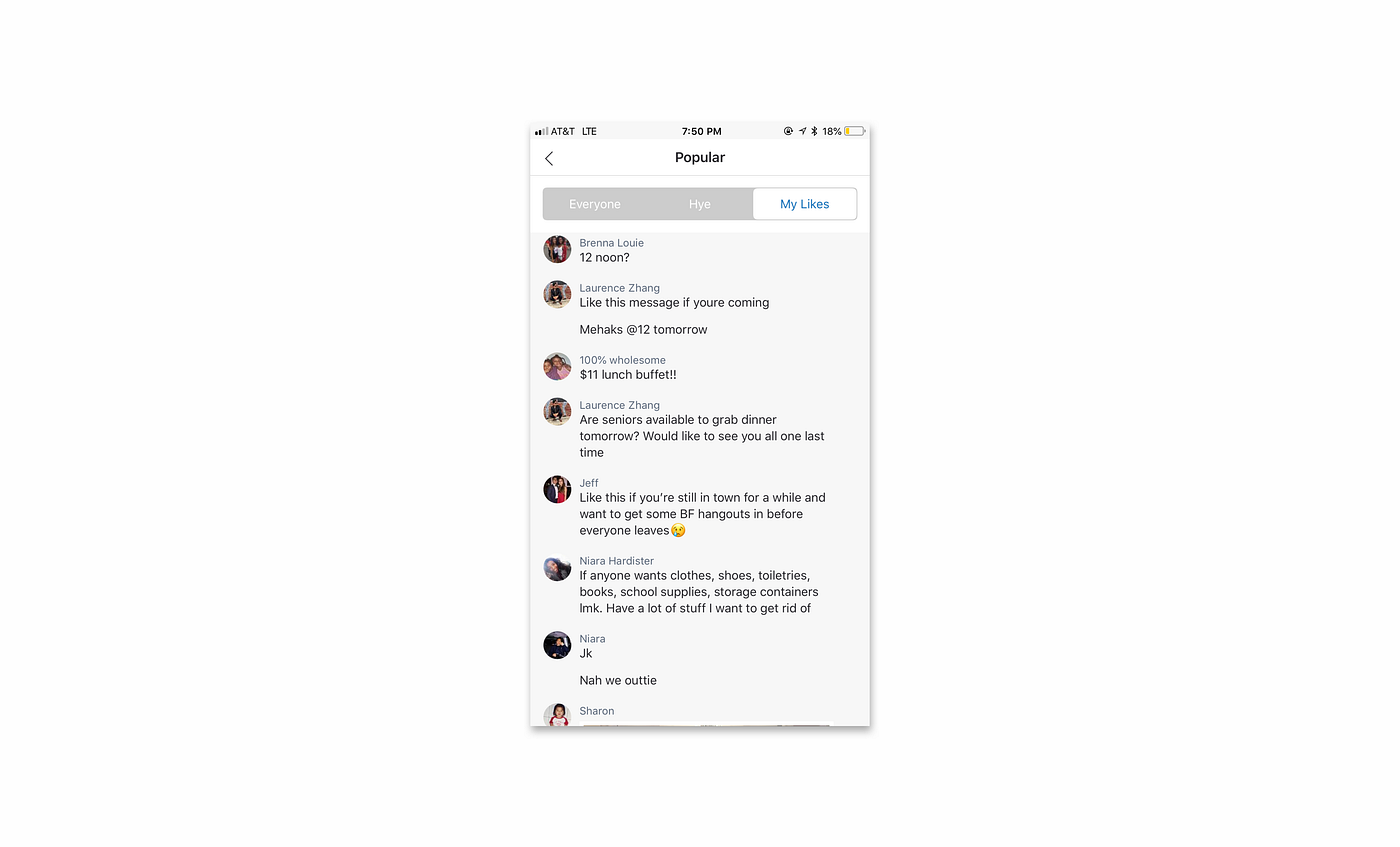
Keeping in mind that in that location is a comparable feature to pinning (or starring) that GroupMe offers, I conducted a user enquiry to find out how users used GroupMe's existing features, and how they feel about using GroupMe and/or other group messaging products.
User Research
From interviewing 3 GroupMe users, I found three master insights:
- Users want to communicate efficiently . ("I send messages on GroupMe because I want the everyone in the group to read it. Otherwise I would use direct messages")
- Users desire to share useful information with others in the group chat. ("I use GroupMe to tell people whats going on, or to program or make decisions together.")
- Users don't even know about GroupMe's 'Popular' page. ("What is that?")
Market Research
To find out what GroupMe was missing, I explored how other products allowed their users to find important information in group chats.
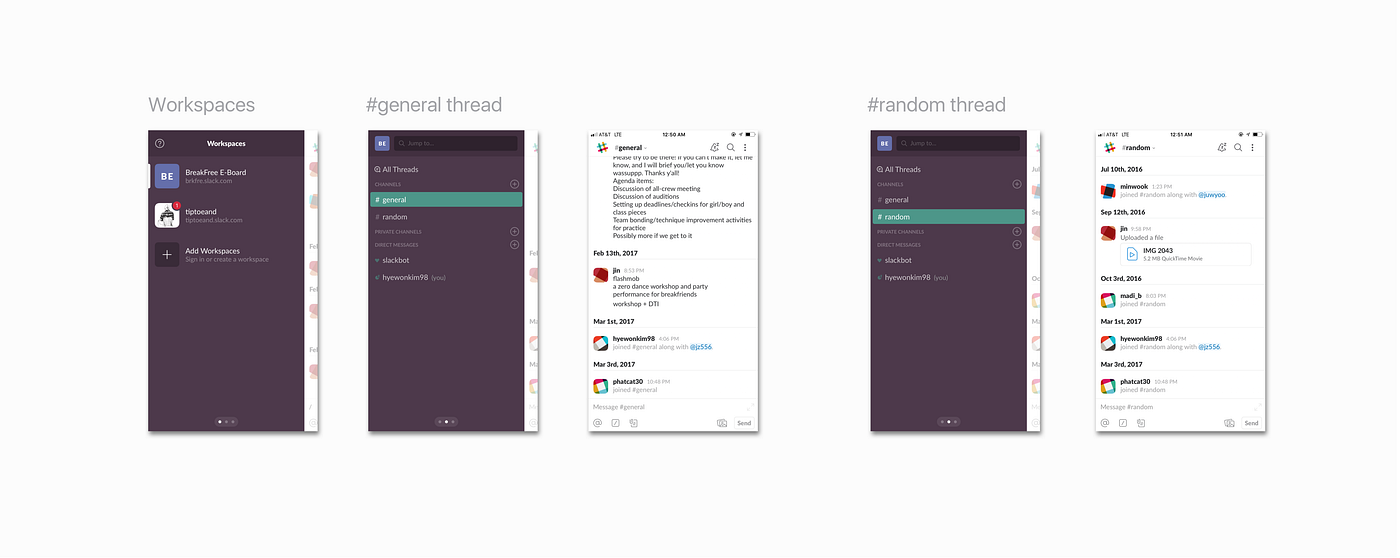
Slack heavily focuses on grouping interactions and communications online. Nonetheless, even though Slack implements many features that help users find meaningful information in a group environs — such as the Thread feature, Pinning and Starring feature, etc. — information technology'south likewise heavy for a casual environs similar group me.
People Want Efficiency
At first, I thought that a feature like pinning or starring would fix the problem. But the problem actually rooted from the lack of efficiency in GroupMe chats.
People desire to communicate efficiently and share meaningful and useful data with each other.
Finding the places to amend
With my friends Allison Kim (a Sophomore Sociology major) and Jenny Yang (a Senior Pre-med) as my brainstorming buddies, nosotros found ii solution spaces:
- System — How might we enable users to organize the conversations better, so that they tin can efficiently find or share information?
- Accent — How might we enable users to emphasize certain messages from others, so they tin can differentiate certain messages from others?
What if Users Could Organize Letters?
I wanted to find out if organization would actually improve the efficiency in GroupMe chats. So, I drew out some user flows of features that might help reach that:
01 | Annunciation Feature
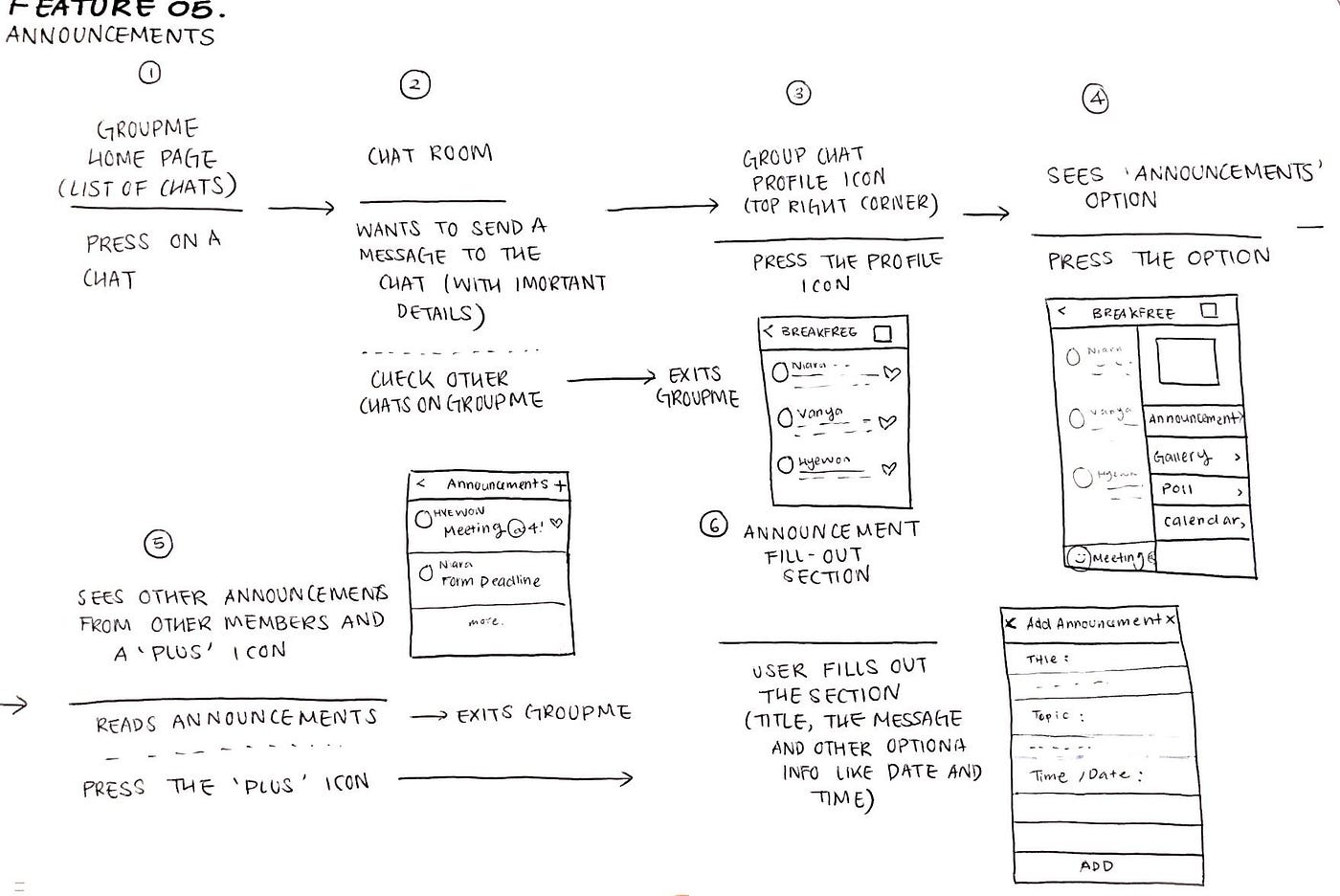
This feature allows users to post announcement, split up from group letters — kind of similar a notice lath. Although it has potential, a feature like this would take away one of GroupMe's major qualities: instantaneous communication.
02 | Tagging Feature
The Tag feature allows users to organize letters on the fly — kind of like Slack'southward Thread feature, but more than instantaneous.
Using a elementary #hashtag, users can categorize different messages under different tags (i.e. #random, #marketing, #important, etc.). This feature came out to be more favorable over the other.
The Ability to Emphasize Messages
The Tag feature allows users to organize messages with customizable tags. But it also allows them fix apart certain letters from others.
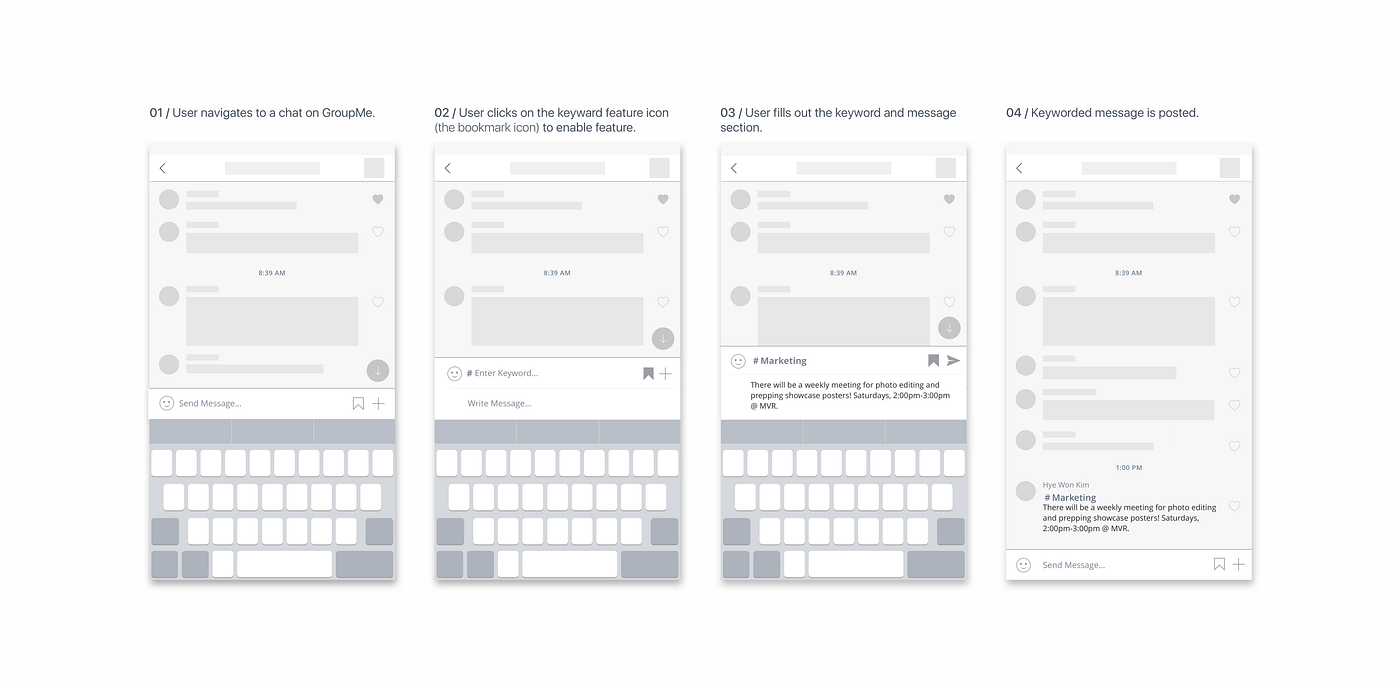
Improving Organisation While Maintaining Simplicity
To detect out how users feel about the characteristic, I conducted a pocket-size user testing, from which I gained a couple of insights:
- Users plant it deadening have extra steps to enable the characteristic. To enable the feature, users have to i) click the icon, two) fill out the keyword, 3) fill out the bulletin, and finally 4) send the bulletin.
- They noted that information technology did non wait equally "aesthetically pleasing" as other existing GroupMe features.
Thus, I brainstormed some more than visual explorations:
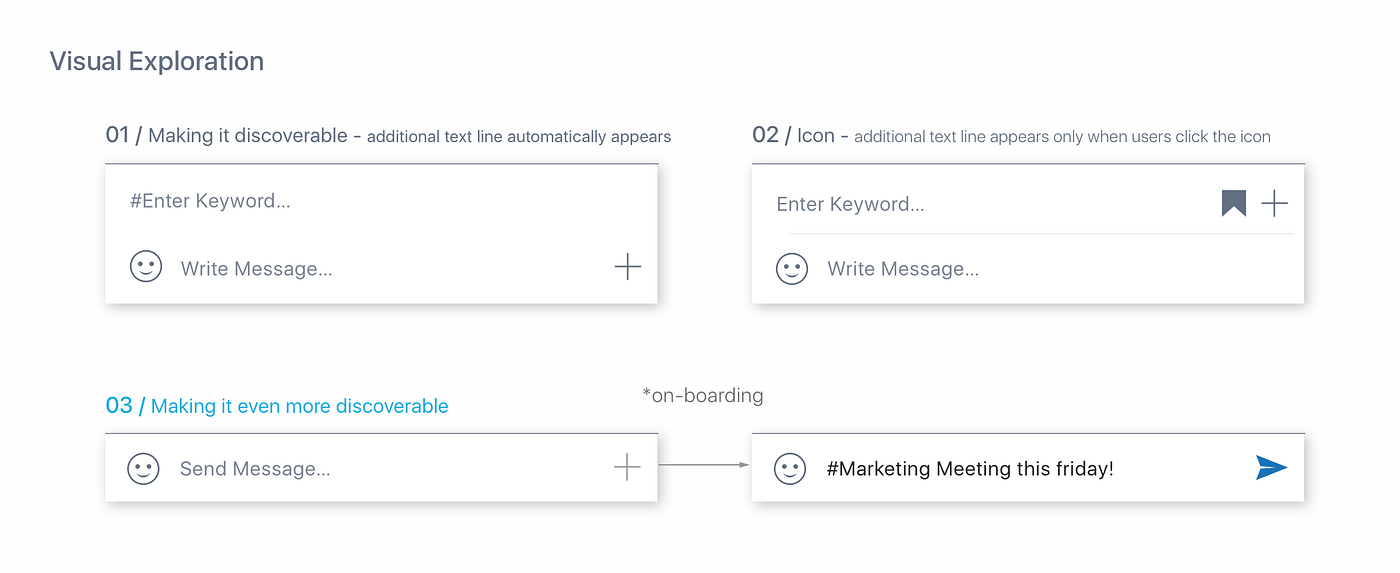
From the user testing and visual exploration, I was able to identify the issues in my initial design (02):
- Visually crowds upwardly the expanse
- Complicates the workflow
- Made users experience similar they must fill out the boosted text line
- Takes away GroupMe'south simplicity and effortless pattern.
Then, I decided to get with Visual Exploration 03 considering:
- It maintains GroupMe's elementary, clean, and intuitive flow the near.
- Makes users feel similar it's an option for them to create a tag — not a must.
However, using Visual Exploration 03 meant that the characteristic is at present discoverable . So, users need a fashion to observe out what this feature is and what information technology does — on-boarding.
Getting Users On-board [ing]
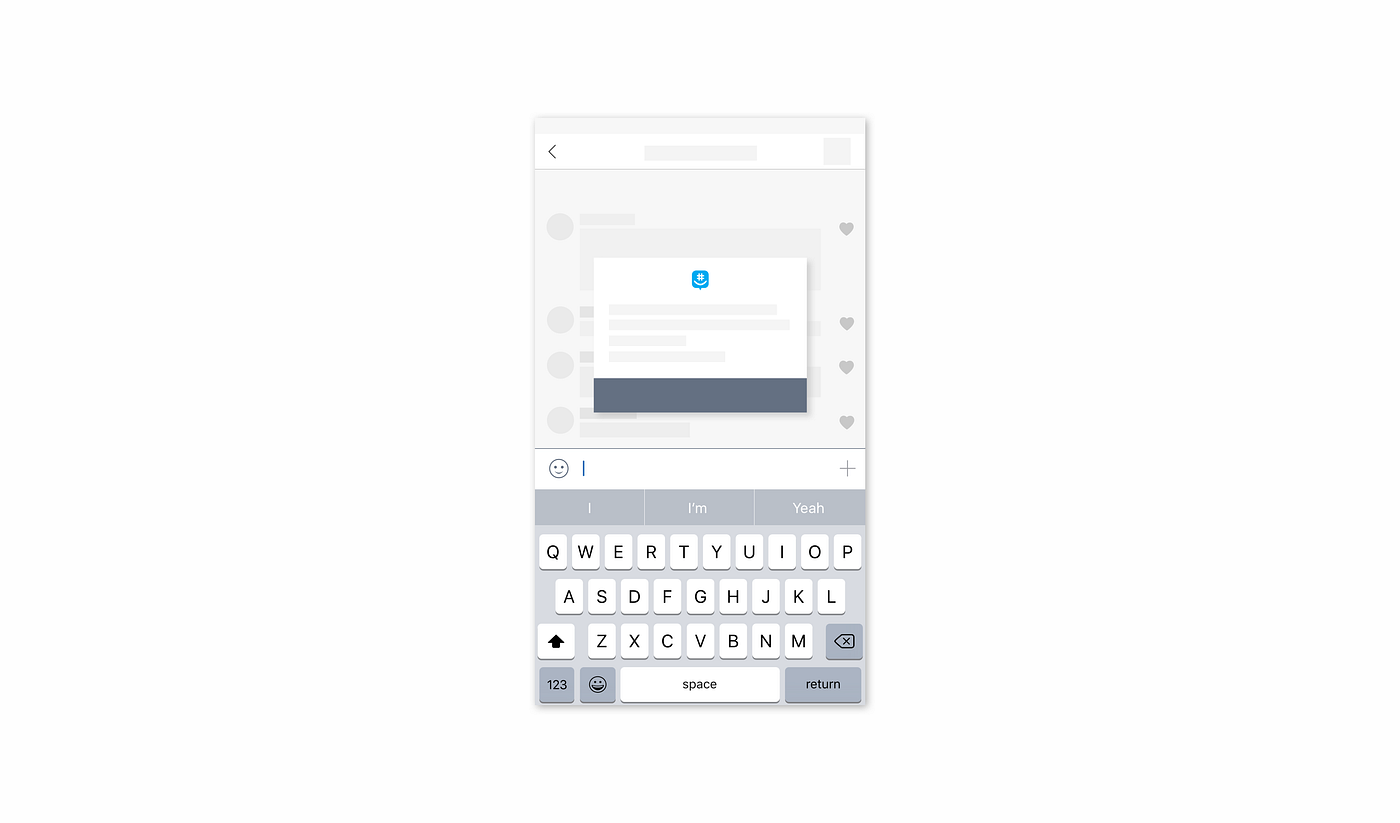
After exploring some possible on-boarding designs, I decided to go with the i shown above considering of its simple and light, similar to other GroupMe's existing features.
I so ventured into what the on-boarding message would actually tell the users. The goals that I wanted to achieve through this were:
- Tell users that at that place is a new feature.
- Give users a concise description of what the feature does.
- Keep the on-boarding message quick and lite — users don't want to sit there reading a long message
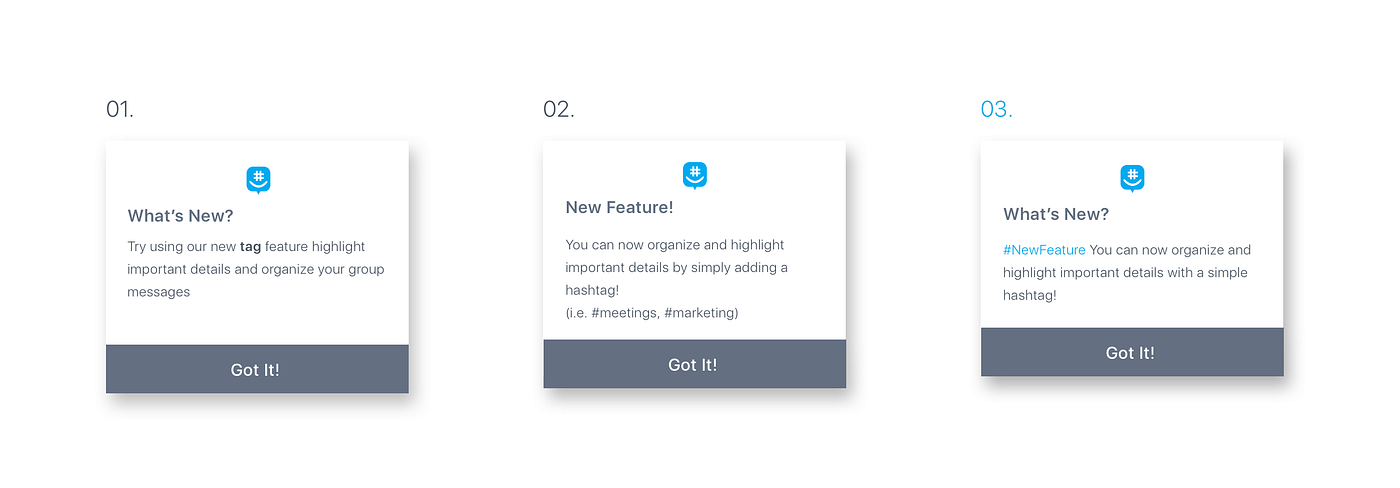
After getting some feedback, I went with Exploration 03 because it felt the about curtailed and illustrative, while satisfying the goals that I set previously.
The next pace I took was figuring out how the different tags were going to be listed:

Later the exploration, I decided to go with Exploration 03 because it is consistent with GroupMe'due south existing design.
Further Emphasizing the Importance of Tags
Since the overall idea behind the Tag feature is to organize likewise as to make messages more meaningful, I asked myself some questions regarding how I can accomplish that:
- How do you make a message more meaningful to everyone in the chat?
- How do you let people know that the message is important?
- How else tin we differentiate message with tags?
After brainstorming, I got the idea that accountability can add meaning to messages. If users knew the scope of the message they sent — such as seeing which grouping members the bulletin has reached — they would have a improve understanding of whether or not they demand to further stress the details in the message.
Therefore, I implemented the 'seen' feature, specifically for messages with tags in them:
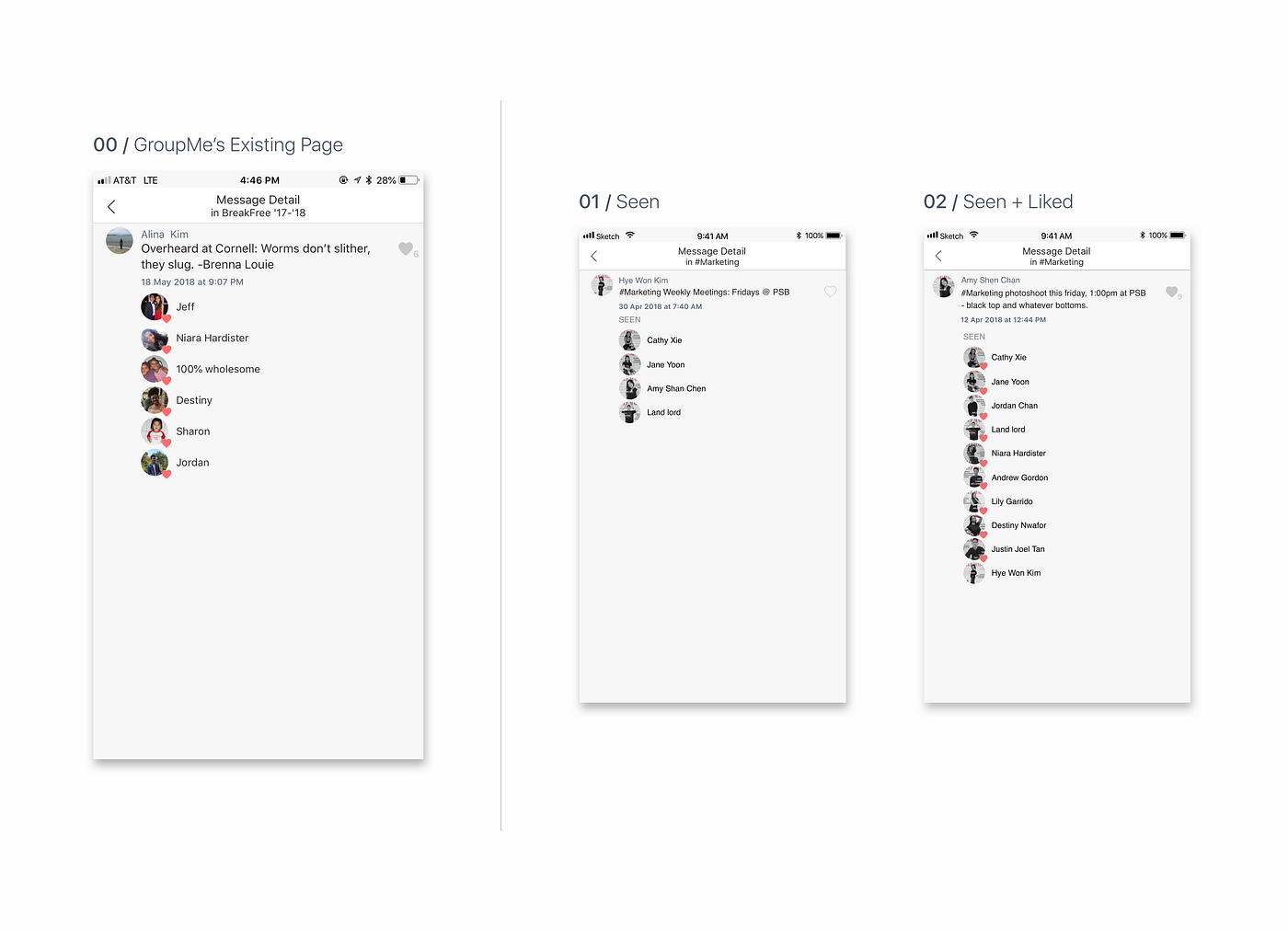
To proceed the components of the Tag feature consistent with the rest of GroupMe, I adapted GroupMe's existing design that shows who liked a message. To successfully adapt the existing pattern to the new 1, I had to consider two scenarios:
- Seen: when people see the message but don't similar the bulletin.
- Seen+ Liked: when people like the message (they would have already seen in)
Thus, the bulletin details for the Tag characteristic shows a listing of people who liked the message first, then the people who has just seen the bulletin, satisfying both scenarios.
Final Interaction for Creating and Accessing Tags

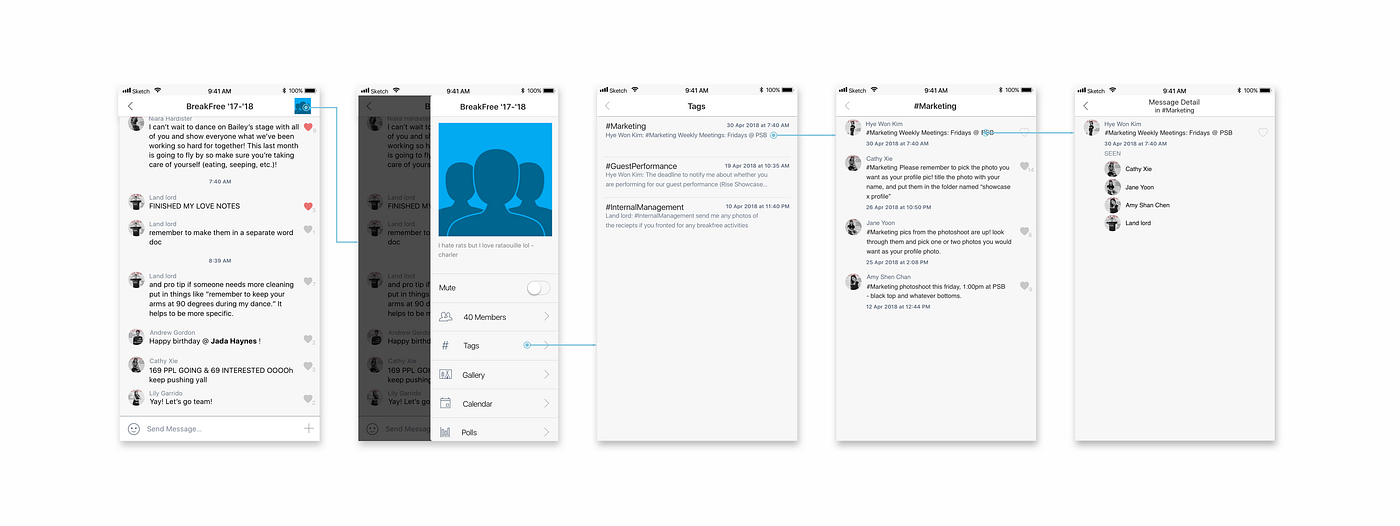
The finished prototype puts the tag feature into action. It shows how users can create a tag and access a tag through the message and chat menu. With this feature, users can separate important messages from casual and light-hearted conversations. It also allows users to find the data hands and efficiently.
Conclusion
Group platforms like GroupMe play a huge function in our daily lives, particularly today. And GroupMe is only one of many other group platforms like Facebook, Messenger, Slack, and WhatsApp. However, group chats tin get inefficient at times. I myself am a part of endless group chats, more than than half of which I don't check consistently. Most of the fourth dimension, this is because of the overflowing letters, which makes it difficult for me catch up. With a characteristic like the Tag feature, users have the ability to organize messages in a style that is more than useful. But more chiefly, it makes the messages more than meaningful, which then creates more meaningful relationships.
tuckersiberrupong.blogspot.com
Source: https://blog.prototypr.io/groupme-concept-designing-for-efficient-and-meaningful-communication-2d57f054ebff
0 Response to "In Groupme App, Do.others Know.when You Read Nessages"
Post a Comment